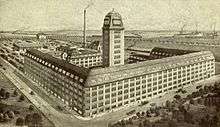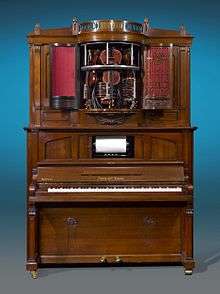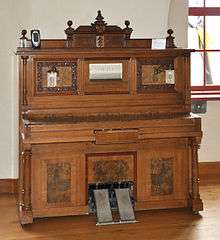Ludwig Hupfeld

Ludwig Hupfeld (26 November 1864 - 8 October 1949) was a musical instrument maker and industrialist.
Life and work


Hupfeld was born in Maberzell (now Fulda in Hesse), Germany.
Hupfeld attended the Royal Grammar School in Fulda and undertook commercial training in Cologne.
In 1892 he acquired the music trade company J. M. Grob & Co., based in Leipzig which was originally a music shop and manufacturer of mechanical instruments.
After taking over the company, the name was changed to Hupfeld Musical Instrument Works. When the company was converted to a corporation in 1904, the name of the company became Ludwig Hupfeld AG.
In 1911, the company moved to Leipzig, to a large factory in Böhlitz-Ehrenberg. Over the years, Hupfeld bought up several construction companies, and in 1925 following a merger with the Zimmerman company, it led the industry in Europe. In the 1920s, Ludwig Hupfeld AG was the largest manufacturer of mechanical musical works in Europe.
One of the most popular products since 1902 was the self-playing piano Phonola American, the European counterpart of the pianola. Hupfield had some success with the 1908 reproducing piano DEA, which later took over the role as Triphonola successfully. The mechanical violin Violina, an orchestrion, despite an ingenious design, was seen as aesthetically unsatisfactory and therefore less successful.
During World War II, the company made ammunition boxes and fuel tanks in the factory. At the end of the war, as an ex-arms manufacturer, it was made a state-owned enterprise by the communist authorities of East Germany in 1949. The company was renamed VEB Deutsche Pianounion and continued to produce pianos under the brand name Hupfeld.
Hupfeld died in Leipzig on 8 October 1949, and was buried in the Leipzig South Cemetery in his family tomb, where he was joined in 1953 by his wife Elisabeth (née Beyer, born 1874)